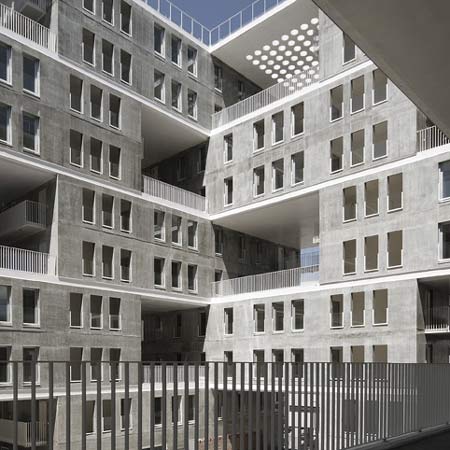
Celosia Residence by MVRDV and Blanca Lleó
Dutch architects MVRDV in collaboration with Madrid architect Blanca Lleó have completed a social housing project in Madrid, Spain.
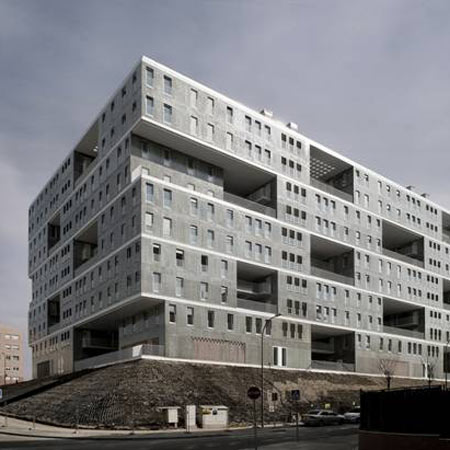
The large block is divided into thirty smaller, staggered blocks of apartments, creating communal patios throughout the building and allowing air and light to penetrate between the homes.
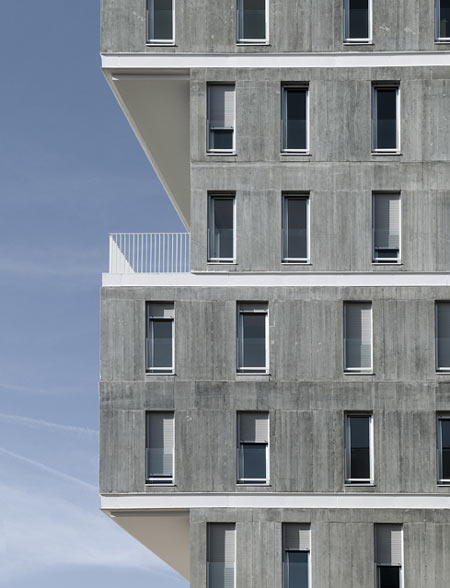
The building includes 146 apartments, most of which have loggias.
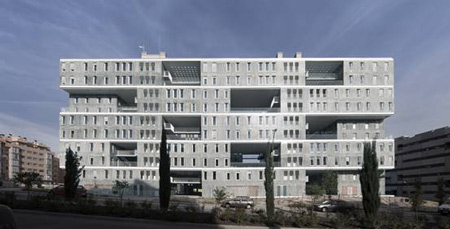
The facade is made of concrete coated in polyurethane.
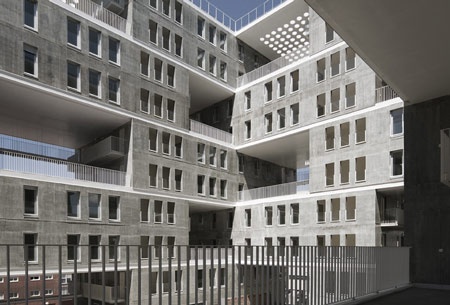
Photographs are © Ricardo Espinosa and are used with permission.
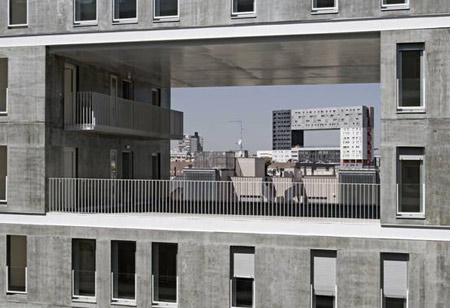
The following information is from MVRDV:
--
MVRDV with Blanca Lleó complete Celosia Residence, Madrid
In Madrid-Sanchinarro the first residents received the keys to their apartments in the just completed Celosia building. Jacob van Rijs of MVRDV and Blanca Lleó have completed the social housing block near the Mirador Building, which is an earlier collaboration. The perforated block of Celosia assembles 146 apartments, communal outside areas throughout the building, and parking and commercial program in the plinth. The total floor area is 21,550m2. With a construction cost of 12,6 million Euro the apartments can be sold for affordable prizes. The city block is opened and allows wind and light to enter the building, offering vistas and outside spaces contrasting the surrounding area. The client is EMVS, the public housing corporation of the city of Madrid.
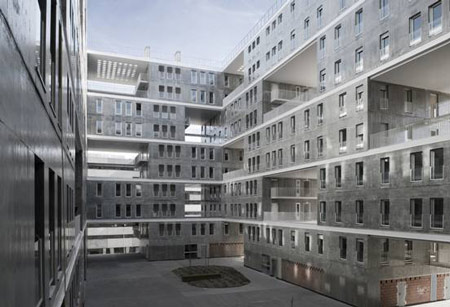
The given volume of the city block was divided into 30 small blocks of apartments. These blocks are positioned in a checkerboard pattern next to and on top of each other, leaving wide openings for communal patios throughout the building. 146 one-, two- and three-bedroom apartments are all accessed via these communal spaces. Most apartments offer additional private outdoor space in the shape of a loggia right behind the front door. Inhabitants have the possibility to gather in the communal high-rise patios which offer views towards the city and the mountains and provide natural ventilation in summer. Opening the front doors connects the private outdoor areas to the communal area.
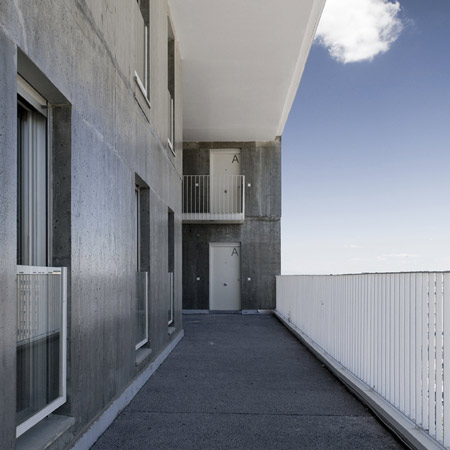
The façade is made of coated concrete which was from the ground floor up constructed in complete mould system, an efficient and clean way to cast concrete, keeping the construction cost to a minimum; an important asset for this social housing project. The polyurethane coating allows the façade to shimmer and reflect depending on the light condition.
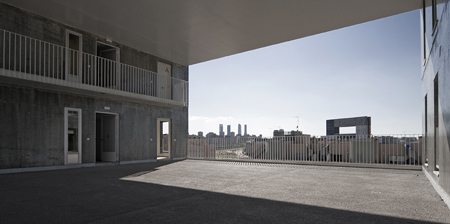
All windows are floor to ceiling height and can be shielded from the sun. Each apartment has the possibility of cross ventilation through two or three facades and enjoys views through the building and to the surrounding. A system of power efficient boilers is used in the building; solar panels on the roof heat water reducing energy consumption further. Underneath the building a parking garage on two levels provides 165 parking spaces. The ground floor offers room for 6 individual retail units.
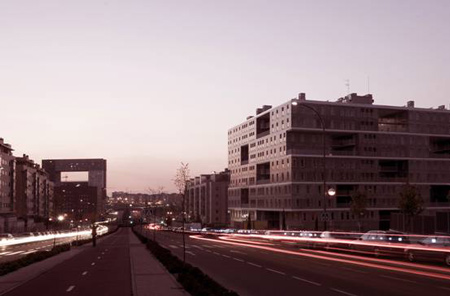
The nearby Mirador building which was completed by MVRDV and Blanca Lleó in 2005 also discusses the traditional building block by putting it vertical. The Celosia building is horizontally arranged around the interior court but opposes the generic introverted architecture in the area by bringing light and communal space into the building allowing a perhaps more extraverted Spanish lifestyle as every apartment opens up to a small plaza.